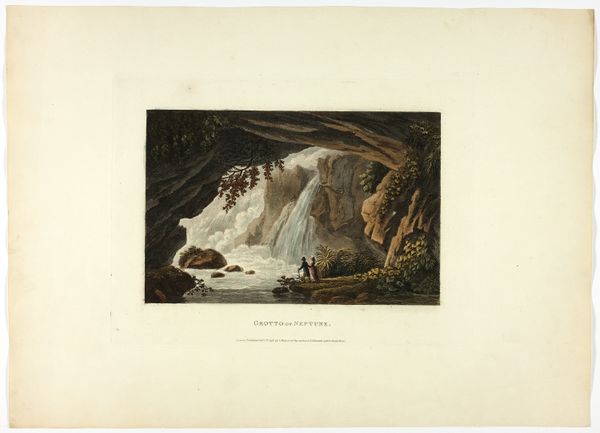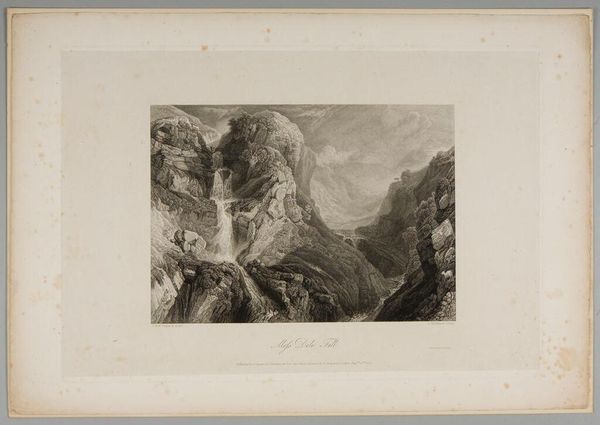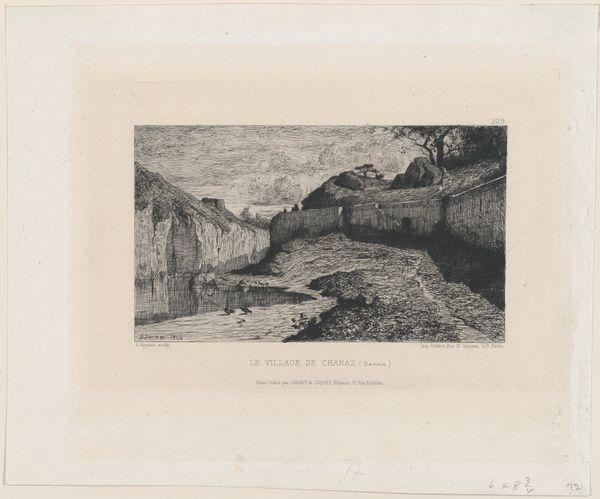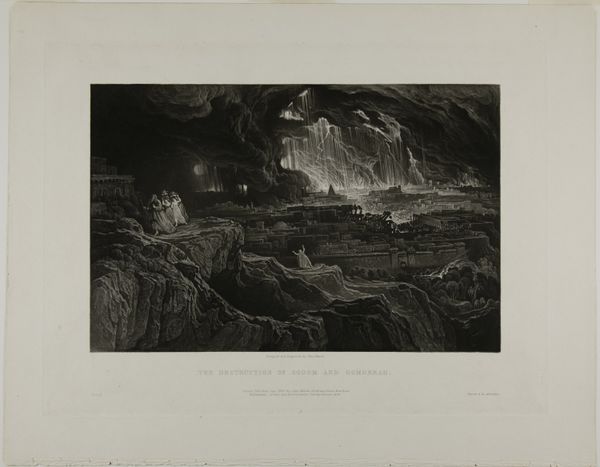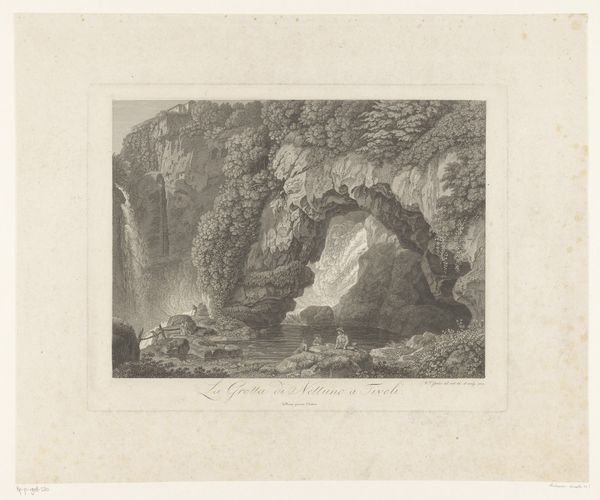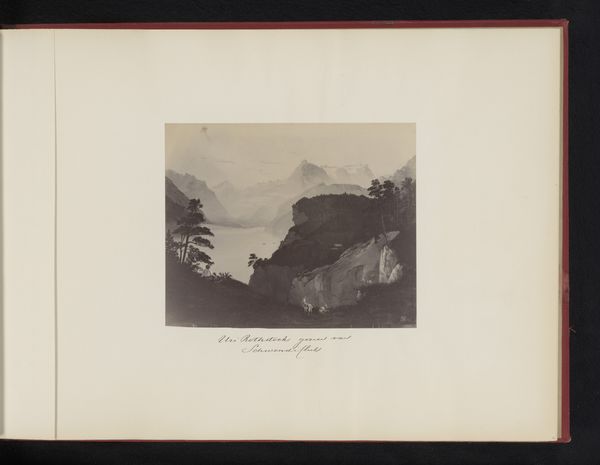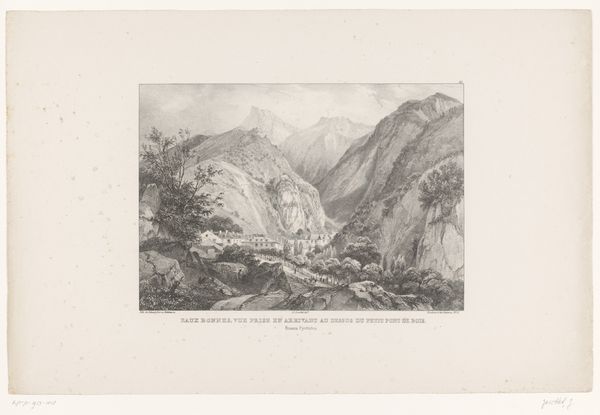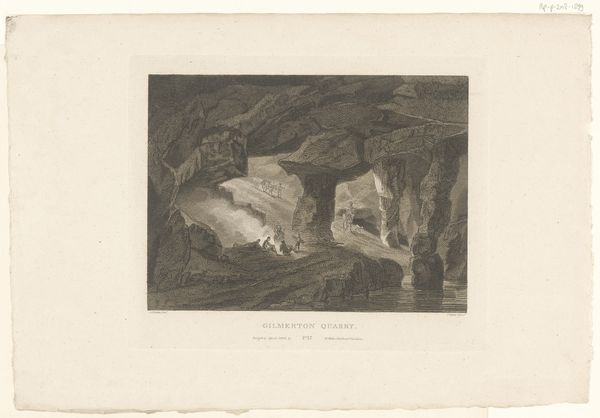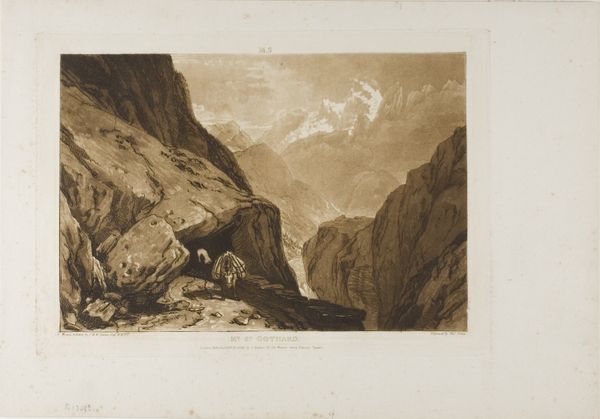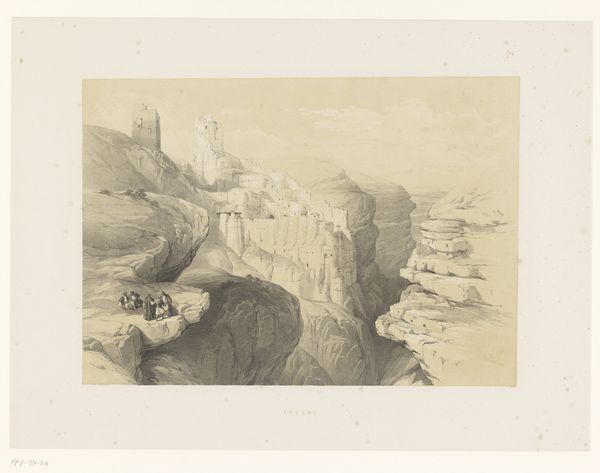
Grotto of the Sirens, plate thirty from the Ruins of Rome Possibly 1798
0:00
0:00
drawing, print, paper
#
photo of handprinted image
#
drawing
#
natural tone
# print
#
culinary art
#
paper
#
appetizing
#
england
#
food art
#
watercolour bleed
#
watercolour illustration
#
natural palette
#
botanical art
#
watercolor
Dimensions: 330 × 448 mm (sheet)
Copyright: Public Domain
M. Dubourg made this print, "Grotto of the Sirens," sometime in the early 19th century. It is a scene rendered in aquatint, a printmaking technique that simulates the broad tonal washes of watercolor. To create an aquatint, a printmaker repeatedly applies acid to a copper plate, achieving subtle gradations of tone. The atmospheric effects here rely entirely on the artist’s mastery of this painstaking method. The way the light filters in from the mouth of the cave would have required a lot of skill. Notably, aquatint became popular as a reproductive medium, translating paintings into widely distributed prints. This print is from a series called "Ruins of Rome," and it reflects a burgeoning tourist industry. Dubourg wasn't just making art; he was participating in the visual culture that supported the rise of mass tourism. Paying attention to the material realities of printmaking helps us understand how images like this one circulated, shaping perceptions of places like Rome for a broad audience.
Comments
No comments
Be the first to comment and join the conversation on the ultimate creative platform.
